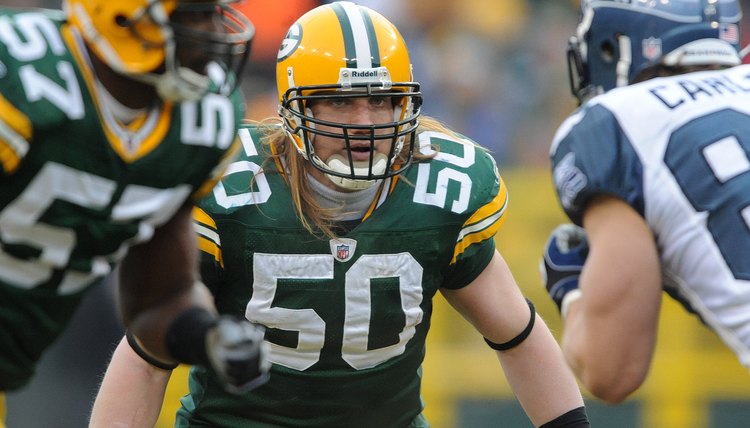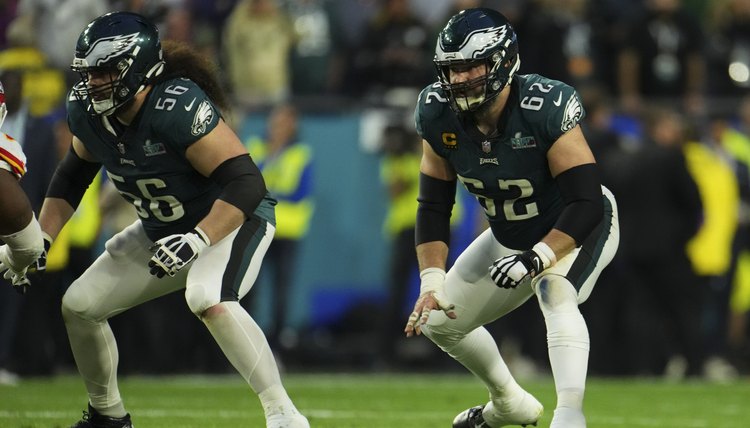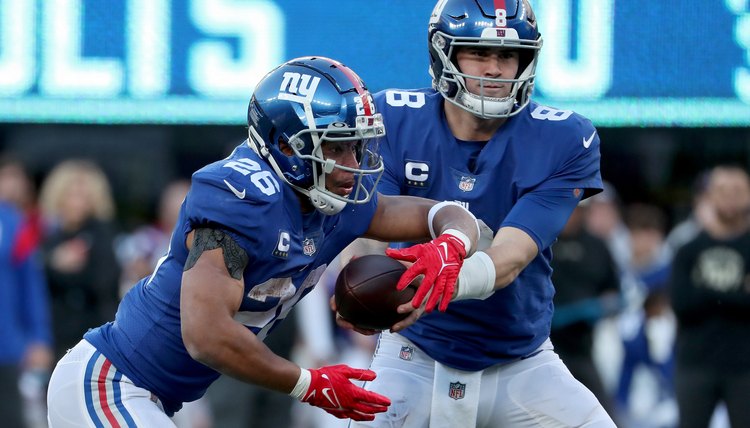How to Learn to Read the Plays During a Football Game

American football plays are not designed to be easily read -- if you can read them on the sideline, in the stands, or in front of the TV, so can the defensive players on the field. Teams that provide obvious clues to their offensive plays end up struggling to have big plays, consistent yardage and score touchdowns, and the offensive coordinator’s job ends up on the line.
Shrewd quarterbacks such as Peyton Manning, who can read the defensive alignment well by looking at the positionings of cornerbacks, linebackers and defensive linemen, change the play to a different one from the playbook, or “call an audible,” before the snap to further disguise their intentions.
Still, experienced analysts of the gridiron look for clues shown by opposing players to help you read the plays on the field come game day.

Offensive Linemen Clues
Watch the five offensive linemen -- the center and the pairs of tackles and guards -- at the moment the center snaps the ball. If the entire offensive line stands straight up at the snap, the play call is a pass and the quarterback will drop back to find his open receiver, advises Mark Oristano in “A Sportscaster’s Guide to Watching Football.” On the other hand, if the offensive linemen shove forward across the line of scrimmage, a run will follow.
The reason behind the different stances is simple; If an offensive lineman moves across the line of scrimmage during a pass play, a penalty for ineligible man downfield follows.
Visually follow the guards who flank the center if the linemen blast forward across the line of scrimmage, signaling a running play. Nine times out of 10 they will lead your eyes to the point of attack in the backfield, namely where the hand off occurred and which direction the ball carrier is going, Oristano states.

Formation Clues
Look for a spread formation, with three or more wide receivers lined up wide or to one side of the field in what is called the “trips right” or “trips left” formation, as a clue that passing play is imminent.
A closely bunched formation, with extra blockers creating a fortress around the ball, indicates a quarterback sneak or attempted run for short yardage, most likely by the fullback. This is usually seen when the offensive team is within a few yards of the end zone or a first down.

Running Back Clues
Study the running back’s eyes just before the snap if a camera provides this shot while watching a football game on TV. Before the ball arrives, he scans the defense from left to right and back again, looking at its alignment. If he inadvertently stares at the point of attack, the middle linebacker may read this and call out to his teammates the gap the back plans to hit.

Read the Quarterback
Watch for the quarterback to react to a blitz by linebackers or safeties by trying to throw a quick pass, designed to avoid the sack, to any eligible offensive player (wide receiver, tight end, running back) who slips into the area vacated by the blitzer.
TIPS
Apply play-reading tips to high school football, college football, and even National Football League, being aware that each level ramps up the level of speed considerably, especially when you are dealing with NFL players.
Watch a video recording on your own, so you can focus on the play development, to apply this information to actual game situations. Play the game in slow motion and go back and forth until you see for yourself the patterns that experienced analysts know to look for.
Don’t follow the ball, advises Oristano, as well as NFL.com analyst Pat Kirwan in "Take Your Eye Off the Ball: How to Watch Football." It doesn’t tell you what is going on. Nor does all the pre-snap motion by the receivers, running backs and quarterback. All players but one must set for a full second before the snap.
Writer Bio
An award-winning writer and editor, Rogue Parrish has worked at the Washington Post, the Baltimore Sun and at newspapers from England to Alaska. This world adventurer and travel book author, who graduates summa cum laude in journalism from the University of Maryland, specializes in travel and food -- as well as sports and fitness. She's also a property manager and writes on DIY projects.
